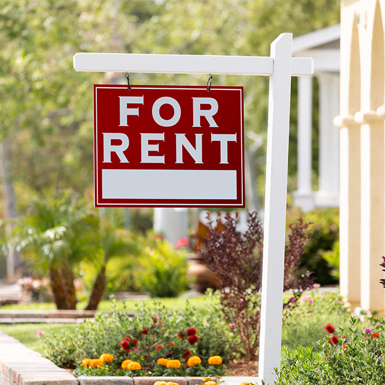What Does Rental Home Insurance for Landlords Cost?
“What does rental home insurance for landlords cost?”
When it comes to questions about property insurance, we’ve heard this one countless times. And, chances are so have you! After all, as a trusted insurance professional, you are a property owners’ first line of defense when they need to protect their rental investment. But once you’ve discussed their coverage needs and found a policy that best fits the property, many clients may wonder why the coverage costs what it does.
Equipped with facts about the factors that most influence the cost of landlord insurance you can enhance clients’ understanding and solidify your reputation as a reliable and informed advisor. Though there are many elements of a property that can affect cost to some degree, we’ve found the following three factors to have the most consistent impact:
- Structure Value
When it comes to the cost of landlord insurance, one of the major influencing factors is the value of the structure itself. In this definition, value is a matter of both the structure type and the structure cost. For instance, insuring a rental home made of wood frame construction will often be more expensive than higher quality construction materials like masonry non-combustible (such as brick, stone, concrete, metal) construction. Beyond the general increased hardiness of these higher quality construction types against miscellaneous forms of damage, the burn rate (which is markedly increased in wood frame construction) also has an impact on premium. Essentially, the lower the likelihood that the property will succumb to risk, the more favorable that rates may be. - Location
In a similar vein to the first factor, location is a no-brainer. Typically, the closer the residential property is to a source of risk, the greater chance the rates may increase. If a rental home property is, for instance, along a coast where flooding may occur, or in an area where tornadoes are common, coverage may become more costly. Exposure to these riskier areas can impact a property’s eligibility for coverage, as well as the cost. Being in an area where the residential property may be exposed to environmental risks can also necessitate additional protections via a special property insurance policy form. - Type of Coverage
As a continuation from the previous item, the more coverage a rental home investment needs to properly protect it, the more it may cost in premium. With US Assure’s rental home insurance product, typical exposures that may be covered by a basic policy form include fire, lightning, windstorm, hail, vandalism, etc. But if your client is seeking coverage for theft, glass breakage, weight of snow / ice / sleet, falling objects, sewage backup or collapse coverage, they may need the special form instead, which may lead to an increased rate.
We’ve only covered three elements of a rental home insurance policy for landlords that could affect premium cost for clients. Overall, the cost of landlord insurance has everything to do with what you want to insure and what you want to protect it from. The more coverage clients want, the more they may end up paying in premium. And when their property lacks certain elements that increase the level of security (such as a central fire and burglar alarm), or when they choose a policy with a lower deductible, they may notice higher rates.
So, how much does US Assure’s rental home insurance product cost? Only your underwriter can determine the exact amount for your specific risk, but you can get an express quote for pricing. Reviewing a client’s home with these factors in mind may help guide both your expectations and your clients. Ultimately, it’s a matter of the kind of protection they need, and property policies may vary widely by provider.
Want more insights on landlord insurance? We’ve got you covered. Download 5 Insights About Insuring Rental Homes for Landlords to learn more about the unique risks facing rental homes and how you can better prepare clients to sidestep losses with comprehensive coverage.
This is intended as a general description of certain types of insurance and services available to qualified customers. Your policy is the contract that specifically and fully describes your coverage. The description of the policy provisions gives a broad overview of coverages and does not revise or amend the policy.











